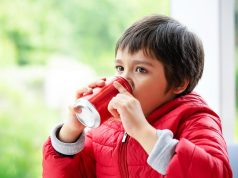Energy drinks accounted for majority of total daily caffeine among consumers
MONDAY, May 6, 2019 (HealthDay News) — Consumption of caffeinated energy drinks is on the rise in the United States among adolescents, young adults, and middle-aged adults, according to a study published April 18 in the American Journal of Preventive Medicine.
Kelsey A. Vercammen, from the Harvard T.H. Chan School of Public Health in Boston, and colleagues assessed dietary data from 9,911 adolescents (aged 12 to 19 years), 12,103 young adults (aged 20 to 39 years), and 11,245 middle-aged adults (aged 40 to 59 years) participating in the 2003 to 2016 National Health and Nutrition Examination Surveys. Energy drinks were defined as nonalcoholic beverages containing caffeine, amino acids, herbs, and vitamins. They are consumed to reduce fatigue and enhance mental/physical performance, but frequent consumption is associated with negative health effects.
The researchers found that from 2003 to 2016, the prevalence of energy drink consumption increased significantly for adolescents (0.2 to 1.4 percent), young adults (0.5 to 5.5 percent), and middle-aged adults (0.0 to 1.2 percent). Only for young adults did per-capita consumption of energy drinks increase significantly (1.1 to 9.7 calories). Energy drink consumers had significantly higher total caffeine intake compared with nonconsumers for adolescents, young adults, and middle-aged adults using data pooled across years.
“The increasing use of energy drinks, especially among young adults, is cause for concern and warrants continued study and surveillance,” a coauthor said in a statement.
Copyright © 2019 HealthDay. All rights reserved.








